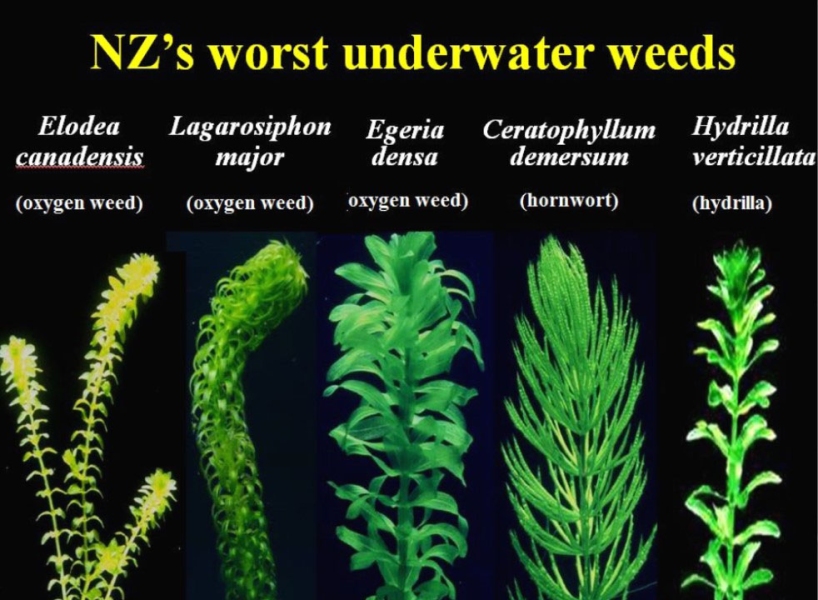Invasive species continue to be one of the greatest threats to the Rotorua lakes and include not only water weeds (Figure 1) but other organisms too.
Invasive fish species such as koi carp and catfish, that are present in high numbers in neighbouring regions (eg., Waikato), would have serious consequences for lake water quality and native biodiversity if they were to spread into the Rotorua region. Furthermore lake managers should be on guard for invasive species not yet found in New Zealand. For example invasive molluscs including the zebra and quagga mussel are continuing to spread between water bodies overseas and have the potential to cause widespread devastation to our lakes should they make it into New Zealand.
Management of invasive species
The management of invasive species is a shared responsibility that requires the cooperation and support of a range of stakeholders, interest groups and members of the general public. The early detection of an invasive species is critical and may make the difference in being able to manage, control or eradicate a species before it has the chance to spread.
Anyone can help prevent the incursion and spread of invasive species into our lakes. In New Zealand, we can learn from the success of programs in other countries where they are recruiting citizen scientists to look for anything new or unusual. Citizen science, broadly defined as the involvement of volunteers in research, provides a means of combining research activities with environmental education and public engagement in science.
Volunteers are able to increase their knowledge and understanding of the environment, learn more about local issues of importance, and contribute to science based recommendations. In addition, observations collected by citizen scientists can provide valuable records and knowledge that otherwise would not have been available.
More information
Presentations from the Lake Water Quality Society Symposium will be made available on the Lakes Water Quality Society website.

